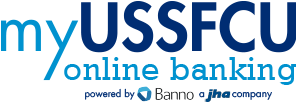Negotiating a Deal
Getting a good deal on a vehicle starts with preparation and ends with knowing when to walk away. Whether you're buying new or used, from a dealership or private seller, a little strategy goes a long way.
Start with Research
Before setting foot on a lot, know what the car you want should really cost. Look up the market value of your preferred make, model, and trim—including options and mileage ranges. This helps you recognize a fair deal when you see one.
Make it easy: The USSFCU Car Buying Service powered by TrueCar® gives you access to member-only pricing, shows you what others paid, and connects you with trusted dealers—all online.
Start Shopping with TrueCar
Get Pre-Approved Before You Shop
Dealers often bundle the car price, loan terms, and trade-in into one confusing package. Take control by getting pre-approved for financing through USSFCU before you shop. This gives you a clear budget and forces the dealership to beat your offer.
Pre-approval strengthens your negotiating power and helps you avoid overpaying on interest.
Choosing Between a Low Rate or Cash Back?
If you're offered a special interest rate or a cash-back rebate, it can be tough to know which saves more in the long run. This calculator from Best Life Wellness makes the math easy.
Enter your car price, down payment, loan term, and trade-in value to see which financing offer delivers the bigger savings.
Compare Low Rate vs. Cash Back
Time It Right
The best deals often happen at the end of the month, quarter, or year when dealerships are trying to meet sales goals. Shop mid-week for more personalized attention, as weekends tend to be busier.
According to TrueCar, weekday shopping increases your chances of landing a better price.
Don’t Fall for Add-On Pressure
After you agree on a price, the finance manager may try to sell you extras. Some may be useful, but many are overpriced or unnecessary—especially when bundled into your loan. Always ask questions and do the math.
- Extended warranties
- Fabric or paint protection
- Gap insurance
- VIN etching
- Key replacement programs
These items are often marked up significantly and bundled into your loan. That means you’ll pay interest on them for years.
Shop around for coverage separately—USSFCU offers gap coverage and warranty coverage at member-friendly rates.
Common Add-Ons to Review Carefully
|
Add-On |
Watch Out For |
|
Destination Charges |
Should be disclosed on the window sticker—not tacked on twice |
|
Dealer Prep Fees |
Often redundant and non-essential |
|
Licensing & Registration Fees |
Call your DMV to verify fair pricing |
|
Service Contracts |
May not be necessary if the car has a solid track record |
Ask the Right Questions
- What’s the total price, including all fees and taxes?
- What incentives or rebates are currently available?
- What’s the actual cost over the life of the loan or lease?
- What’s the trade-in offer—and how was it calculated?
Negotiating Tips that Work
- Ask for their price first. Don’t show your cards too early.
- Back your offer with research. Use TrueCar, Kelley Blue Book, or Edmunds to support your price point.
- Don’t fear the silence. Make your offer and let the salesperson respond.
- Stay calm and polite. Keep emotion out of the transaction.
- Bring a calculator. Do the math yourself and verify the numbers.
Avoid These Sales Tactics
- “Let me talk to my manager…” delays – Be ready to walk if they drag it out
- Signing “non-binding” offers – Only final finance docs matter
- Bundling add-ons into your loan – This increases interest paid over time
- Extended waiting games – If you feel pressured, take a break or leave
- Talking you into higher payments instead of total cost – Always focus on full loan value

The content on this page provides general consumer information. It is not legal advice or regulatory guidance. We do not endorse or guarantee the accuracy of third-party information.



